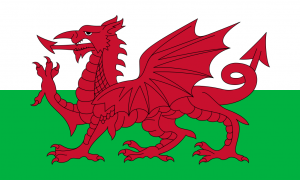Language/Welsh/Culture/Traditional-Music-and-Dance
| ◀️ Holidays and Festivals — Previous Lesson | Next Lesson — Common Hobbies ▶️ |
Welsh music and dance are an essential part of Welsh culture. They are deeply ingrained in its history, and the way that they have evolved over the centuries reflects the country's unique social and cultural identity.
The Origins of Welsh Music and Dance
Welsh music and dance have ancient roots that can be traced back to the prehistoric era. The harp, the most well-known traditional Welsh instrument, dates back to at least the 10th century. In the Middle Ages, bards were key figures in Welsh society who would compose and perform epic poems that told the stories of Welsh people.
Dancing has been a part of Welsh life from even earlier times. Welsh folk dancing is still popular today and is characterised by lively steps and a sense of community that is shared between the dancers.
Traditional Welsh Instruments
Welsh traditional music is centred around a variety of unique instruments, which are still played today.
One such instrument is the harp. It was once a status symbol reserved only for the wealthy, but gradually harps became more widely available, and they were used to evoke a sense of Welsh identity.
Another Welsh instrument that has gained popularity in recent years is the 'crwth', a type of bowed lyre. It was widely used in Wales during the Middle Ages but fell out of use in the early modern period. With the revival of Welsh traditional music, the crwth has come back into favour.
The 'pibgorn' (hornpipe) is yet another traditional Welsh instrument. A type of hornpipe made from a single piece of wood, it produces a distinctive sound and is one of the oldest wind instruments in Europe.
Welsh Traditional Songs
Welsh traditional music also encompasses a range of vocal songs that are typically sung in the Welsh language.
The most famous Welsh song is undoubtedly 'Hen Wlad Fy Nhadau', the Welsh national anthem. The origins of this song can be traced back to the 19th century, and it continues to evoke a powerful sense of Welsh national pride today.
Other traditional Welsh songs include 'Men of Harlech', which tells the story of a battle fought in the late Middle Ages, and 'Calon Lân', a popular hymn that speaks to the purity of the heart.
Traditional Welsh songs often feature complex harmonies and unusual melodies. They can be enjoyed at events such as concerts or Eisteddfodau, and are an important part of Welsh culture.
Welsh Traditional Dance
Welsh traditional dance is characterised by energetic footwork and an emphasis on group participation.
One of the most well-known Welsh folk dances is the 'twmpath', which is similar to a ceilidh or a barn dance. It is generally danced in sets of eight and features complex steps and moves that are often improvised.
Another famous Welsh dance is the 'clog', which is performed in pairs. The dance requires the dancers to hit their clogs together rhythmically, producing a distinctive sound.
Perhaps the most famous Welsh dance, however, is the 'Welsh Morris Dance'. This dance was once a common feature of village life and is still performed at festivals and cultural events today. It is a lively dance that typically involves men, who are dressed in colourful clothing and perform intricate footwork to a selection of traditional Welsh tunes.
Conclusion
Welsh music and dance are an essential part of Welsh culture. They have evolved over centuries to become a unique expression of Welsh identity and are still celebrated today. Through traditional instruments, songs, and dance, Welsh musicians and dancers continue to convey the country's rich cultural heritage for new generations to appreciate and enjoy.
Videos
Welsh traditional dance at International students dinner - Swansea ...
Other Lessons
Sources
| ◀️ Holidays and Festivals — Previous Lesson | Next Lesson — Common Hobbies ▶️ |

